Last Updated on July 31, 2024
Next time you’re cooking up some winter squash, be sure to save those seeds! Much tastier than roasted pumpkin seeds, squash seeds make a delicious and nutritious snack. Here’s what to know about how to make delicious roasted squash seeds.
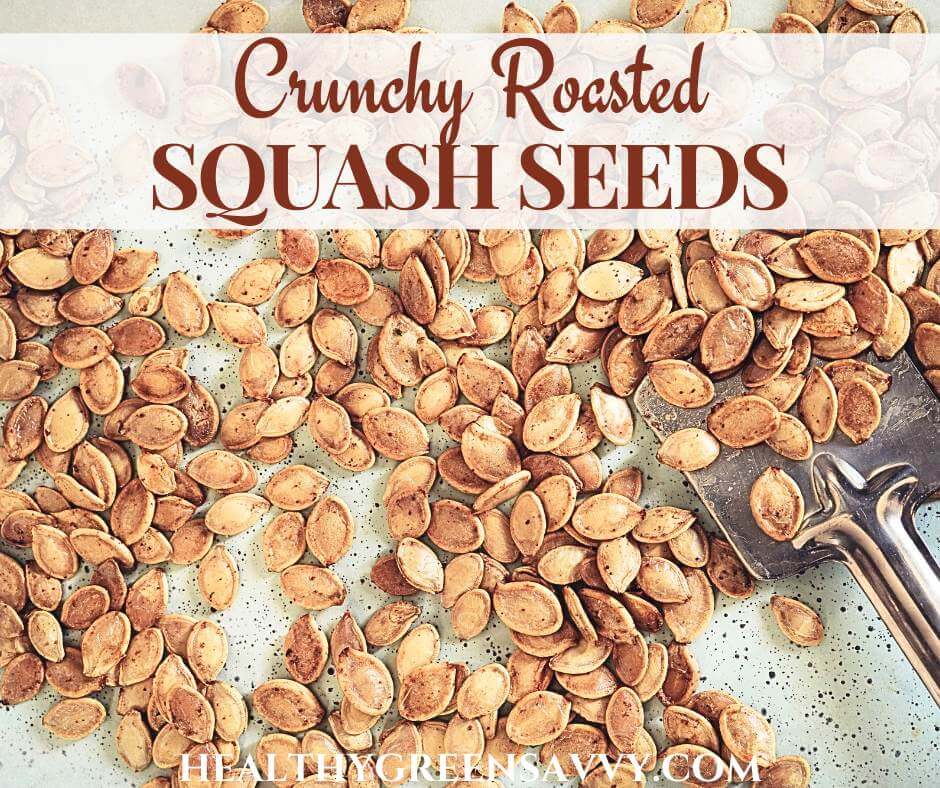
DID YOU KNOW YOU CAN EAT SQUASH SEEDS?
If you’ve ever cooked any winter squash, I’m sure you’ve noticed how much they resemble the pumpkin seeds you scoop out of your jack o’ lanterns each Halloween. You roast those seeds, right?
While most folks don’t realize they’re tossing a delicious snack, the truth is most squash seeds are waaaay yummier than your average Halloween pumpkin seed.
The seeds from winter squashes like acorn and spaghetti squash are much more tender than pumpkin seeds and yield better roasted seeds without all the fibrous leftovers you have to spit out when you eat roasted pumpkin seeds.
Nutritionally, they’re very similar (source). Like pumpkin seeds, squash seeds are high in fiber and a good source of several minerals. Here’s more about the benefits of pumpkin seeds if you’re curious.
Knowing you can eat things most people don’t know are edible (as well as nutritious and yummy!) lets you get more out of your produce purchases and garden harvest.
Roasted squash seeds are just the tip of the iceberg! You can also eat orange peels, broccoli leaves, and so many other parts of plants that usually get tossed.
If you want to learn more about using more valuable parts of fruits and vegetables, be sure to check out our collection of more than 40 root to stem recipes.
WHICH SQUASHES HAVE THE BEST SEEDS FOR ROASTING?
As someone who loves the wide array of winter squashes we get from our wonderful CSA every fall, I’ve tried roasting seeds from many varieties of squash.
Hands-down the best ones are acorn and spaghetti, with an outer shell that’s easy to chew and doesn’t leave you spitting out little shreds of seed coat as you tend to with pumpkin seeds.
Delicata squash seeds are also excellent, but they tend to be rather small, and not many come in each squash.
Tougher seeds, like amber cup and butternut, tend to have thicker, harder-to-chew shells, and I generally don’t bother with them. But some roasted squash seeds recipes call for them, so by all means give them a try and see what you think.
Summer squashes and zucchini don’t work for roasted squash seeds — their seeds are too thin and tender to roast into crunchy snacks. It’s the seeds from winter squashes you want for roasting.
If you want to make a savory crunchy snack with summer squash, try this zucchini chips recipe.
HOW TO CLEAN SQUASH SEEDS FOR ROASTING
Just like pumpkins, squash seeds come embedded in strings of squash flesh. You’ll need to remove those before roasting your squash seeds.
Before cooking your squash, scoop out the seeds and place them in a sieve or colander.
You’ll need to pick off the chunks of squash and strings still clinging to them. Don’t worry if there’s a little bit stuck to the seeds. Those little bits will cook along with the seeds and add a little color. They taste just fine.
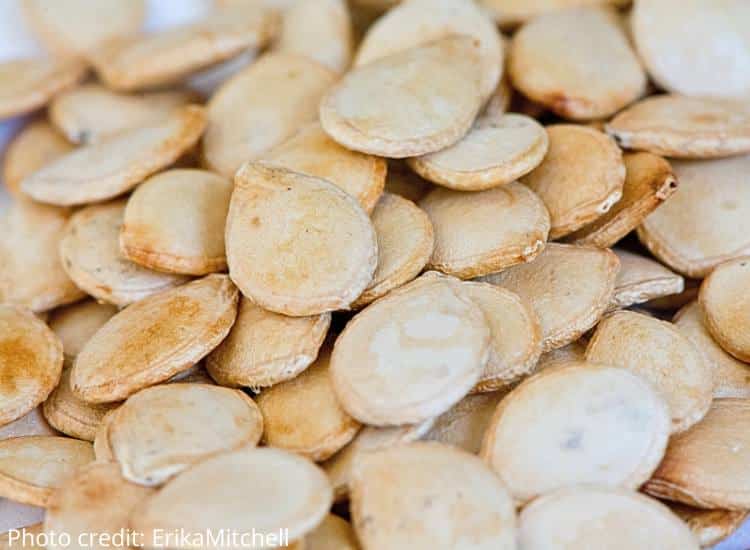
Once you’ve cleaned the seeds, let them dry on a clean towel before transferring to a baking sheet. Spray or toss with a little oil and salt, roast in the oven along with your squash, then enjoy!
Though many recipes suggest roasting squash seeds at low temperatures (300 to 325 degrees F), if I’m turning the oven on to roast squash, I’m going to try to get the seeds roasting at the same time.
Squash takes a long time to cook and is normally roasted at around 400 degrees. Your seeds might cook too fast at this temperature, so here’s the workaround:
Most people don’t realize that you do not need to preheat an oven unless you’re making baked goods like bread or cake. Waiting to put in your squash or other food till it hits 400 degrees is just wasting energy that could be starting the cooking process for you.
So go ahead and put in your squash and squash seeds before you turn on the oven. The seeds will do a lot of their cooking before your oven reaches the set temperature.
If you’ve decided to let your seeds soak awhile or dry longer or just haven’t managed to prep them before your squash is done, I highly recommend roasting them separately in a countertop oven (or toaster oven) at 300 degrees. Smaller ovens use a lot less energy, so a smart choice when you don’t need all that extra space of a full-size oven.
Plus countertop ovens now come with all sorts of helpful built-in features, like convection baking and airfrying. We use ours as a toaster, air fryer, and for baking smaller items like zucchini bread or baked french toast.
This top-rated countertop oven and airfryer even flips away when not in use to save counter space!
Check out the roasted squash seeds recipe below for more details.
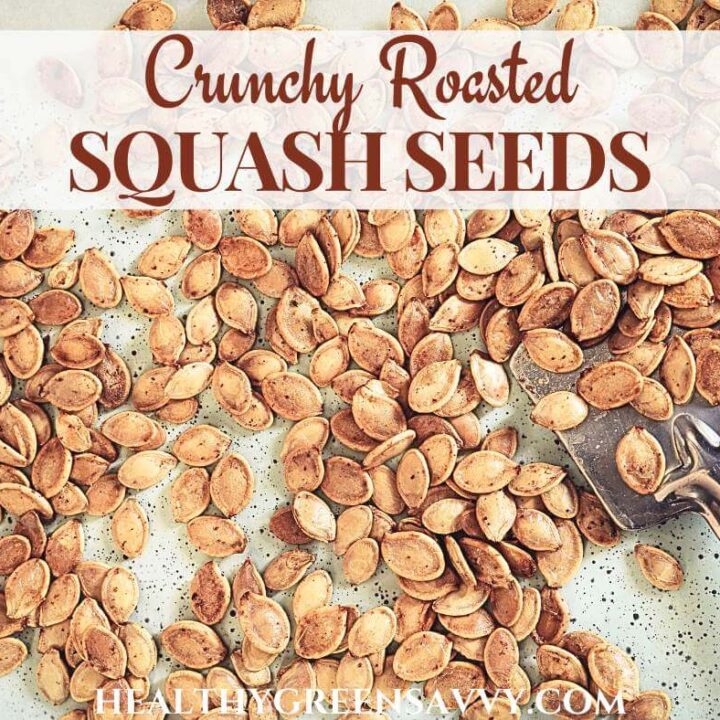
Crunchy Roasted Squash Seeds
These delicious roasted squash seeds make a healthy crunchy snack. If you haven't roasted squash seeds before, you won't believe how good they are!
Ingredients
- Seeds from acorn squash or spaghetti squash
- Olive or avocado oil
- Sea salt
Instructions
- Scoop out squash seeds before cooking squash and place in a bowl of water.
- Remove strings that cling to the seeds and drain in a colander, shaking to remove water. Don't worry about getting every last string, which won't affect the taste much.
- Allow to dry on a clean towel. They don't need to be perfectly dry, but it helps to remove as much water as possible.
- Spread on an oiled baking sheet and spray with your oil of choice. I like to use this refillable spray pump. Alternatively, you can drizzle oil and toss.
- Sprinkle with a little sea salt and toss to get the oil and salt evenly distributed.
- Roast seeds on the top shelf above the squash you're cooking until lightly browned, 10 to 15 minutes, stirring up if they're not cooking evenly. If you hear pops, they need to be removed. Most recipes suggest lower temperatures (around 300 degrees), but you save energy by cooking your seeds at the same time as your squash. Just put them in as the oven heats up and keep an ear out for pops.
- Allow to cool and store in an airtight container.
Notes
You may also soak seeds overnight to increase nutrient availability and digestibility.
They're best eaten within a few weeks.
Nutrition Information:
Yield: 4 Serving Size: 1/4 cupAmount Per Serving: Calories: 125Total Fat: 4gSaturated Fat: 1gTrans Fat: 0gUnsaturated Fat: 3gCholesterol: 0mgSodium: 197mgCarbohydrates: 23gFiber: 6gSugar: 6gProtein: 2g
Nutritional information was auto-generated based on average serving size, number of servings (which varies a lot depending on the size of the squash), and typical information for the ingredients listed. To obtain the most accurate representation of the nutritional information in a given recipe, please calculate the nutritional information with the actual ingredients and amounts used, using your preferred nutrition calculator. Under no circumstances shall this website or author be responsible for any loss or damage resulting for your reliance on the given nutritional information. You are solely responsible for ensuring that any nutritional information provided is accurate and complete.
Roasted squash seeds are delicious with nothing but oil and salt, but you can also try adding your favorite spices for some flavor variation. The options are endless!
Some options to try:
Do you love healthy, crunchy snacks? Be sure to try out these delicious no-fail kale chips and crunchy roasted chickpeas as well!
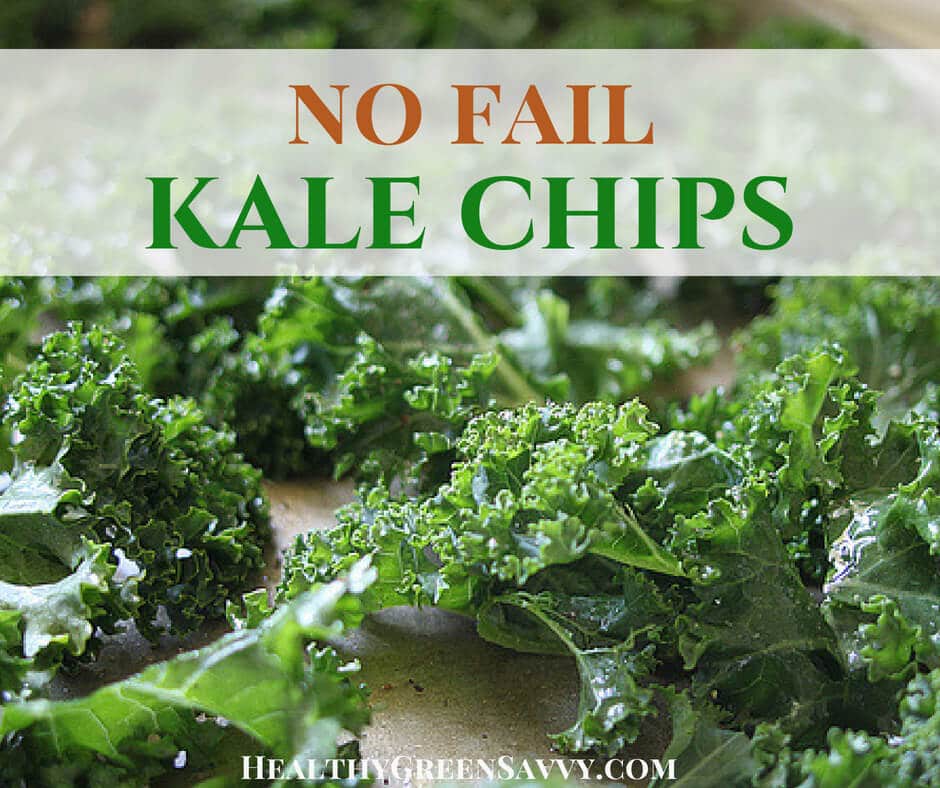
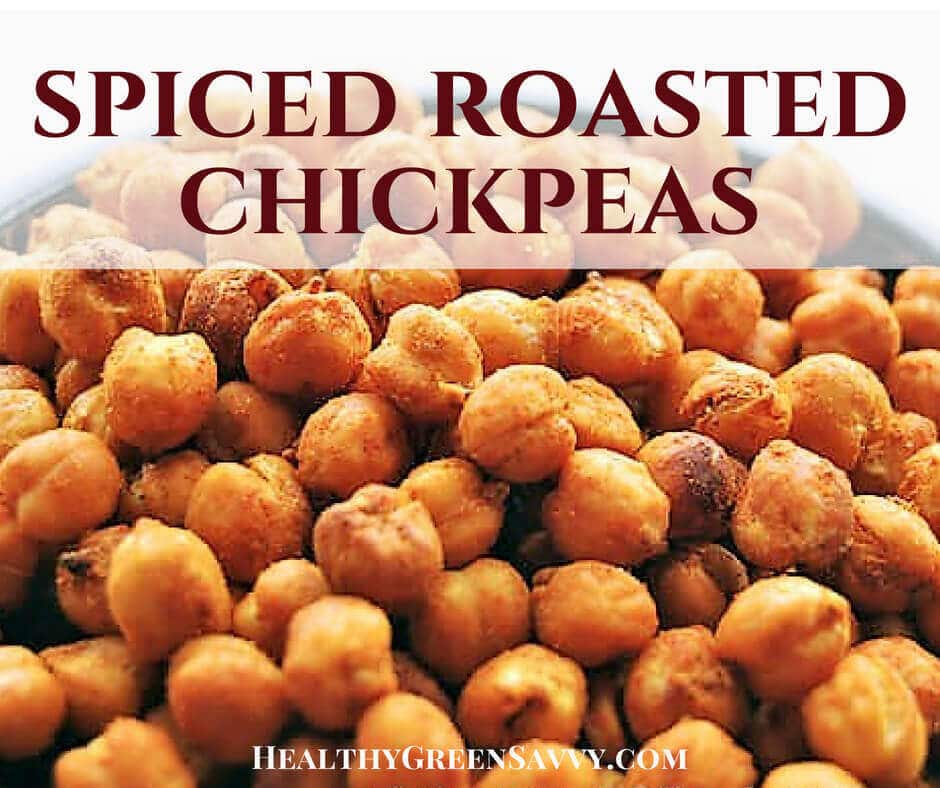
Do you make roasted squash seeds? Which squashes are your favorites?
Save this roasted squash seeds recipe for later!
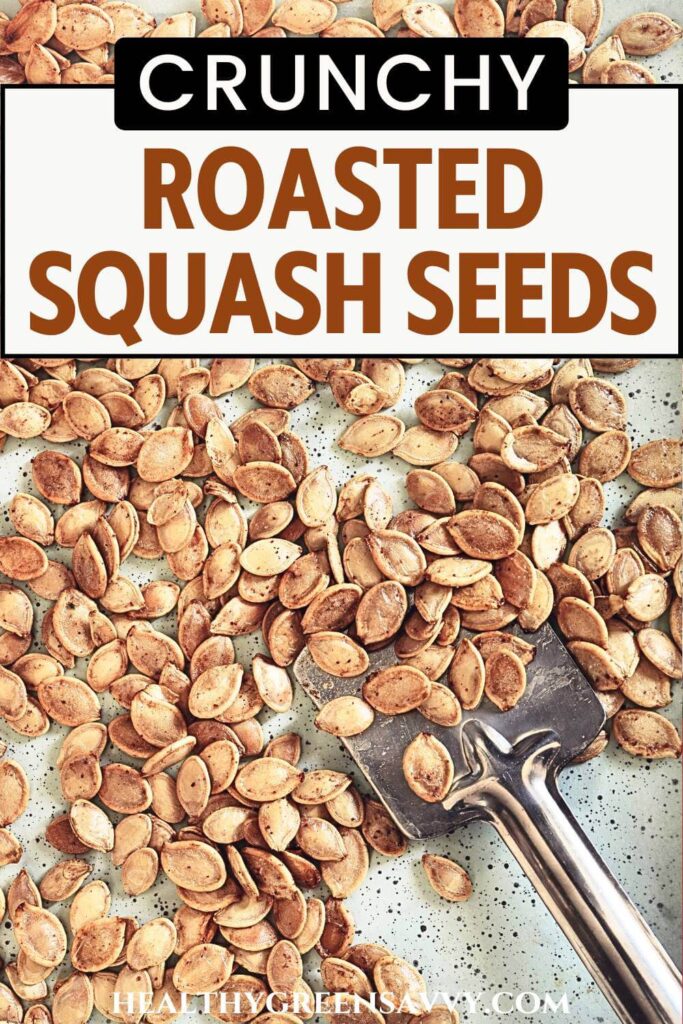
Photo credits in cover and pins: vm2002
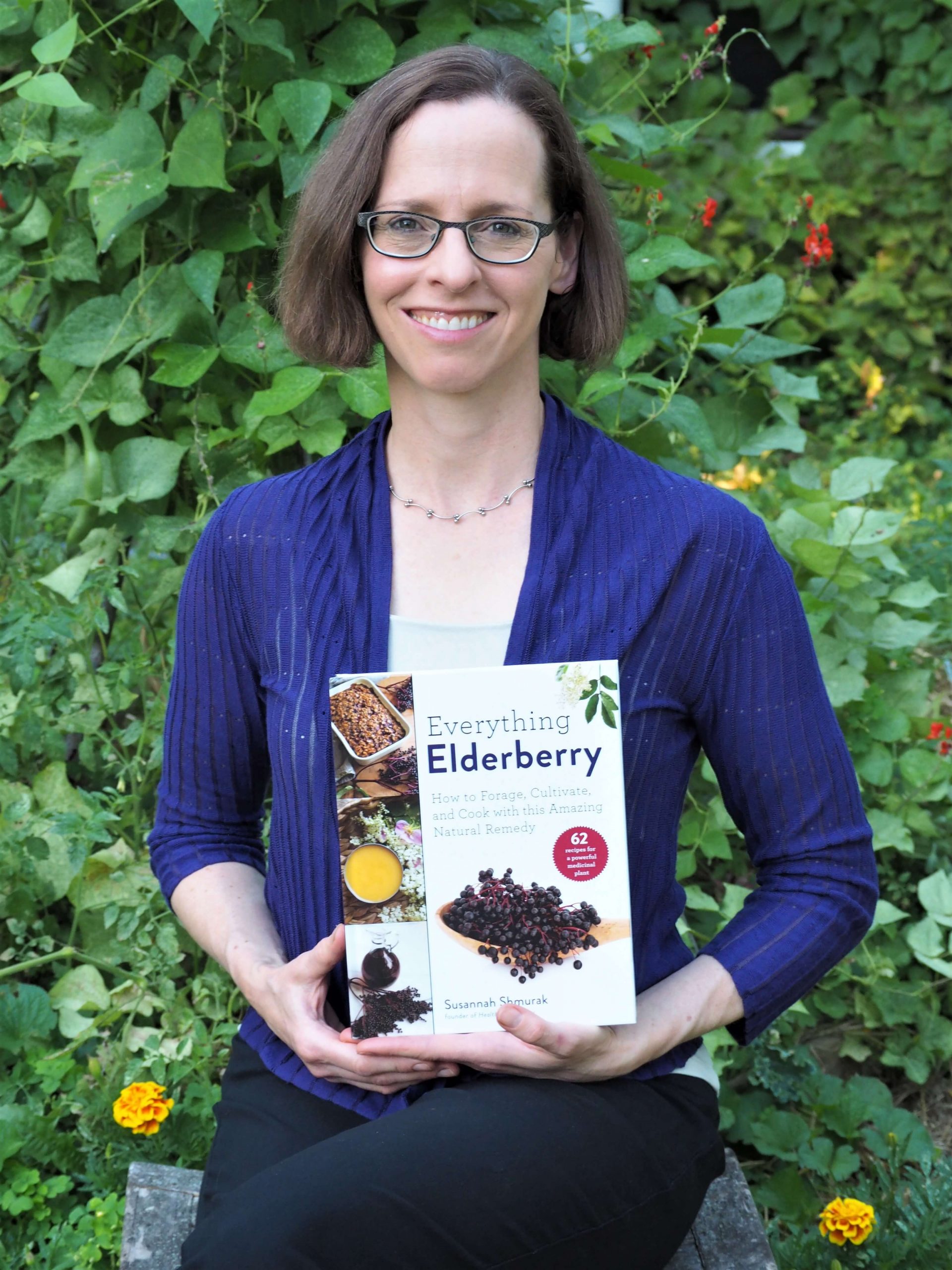
Susannah is a proud garden geek and energy nerd who loves healthy food and natural remedies. Her work has appeared in Mother Earth Living, Ensia, Northern Gardener, Sierra, and on numerous websites. Her first book, Everything Elderberry, released in September 2020 and has been a #1 new release in holistic medicine, naturopathy, herb gardening, and other categories. Find out more and grab your copy here.
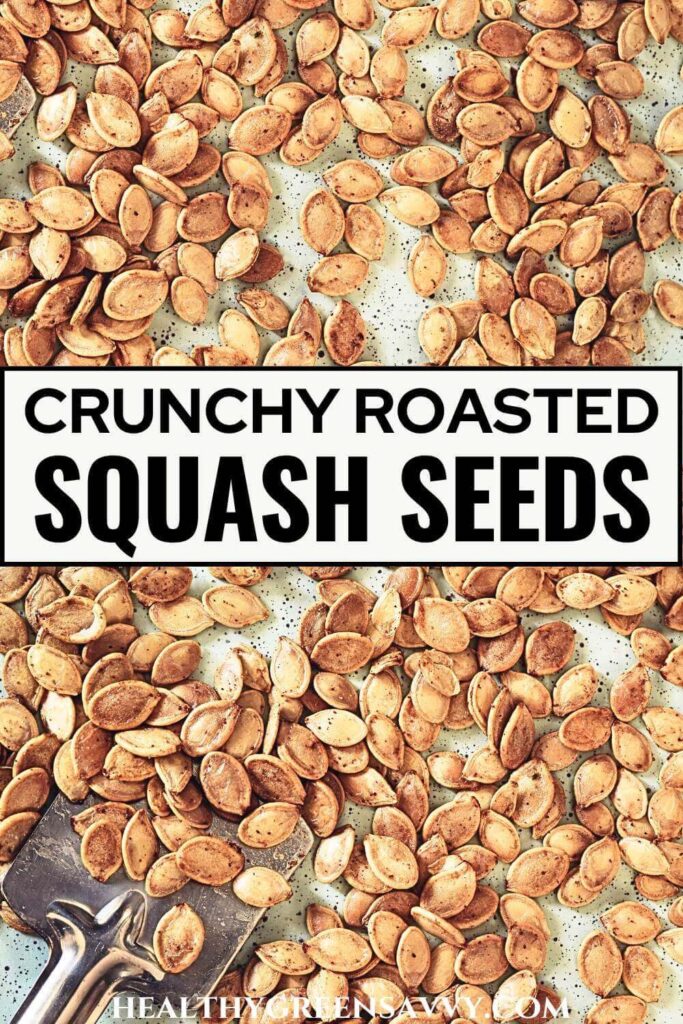
 Hi, I'm Susannah, a garden geek, energy nerd, and fan of healthy food and natural remedies. Need some simple, practical solutions for living healthier and greener? You've come to the right place! More about me and my green projects
Hi, I'm Susannah, a garden geek, energy nerd, and fan of healthy food and natural remedies. Need some simple, practical solutions for living healthier and greener? You've come to the right place! More about me and my green projects
Leave a Reply